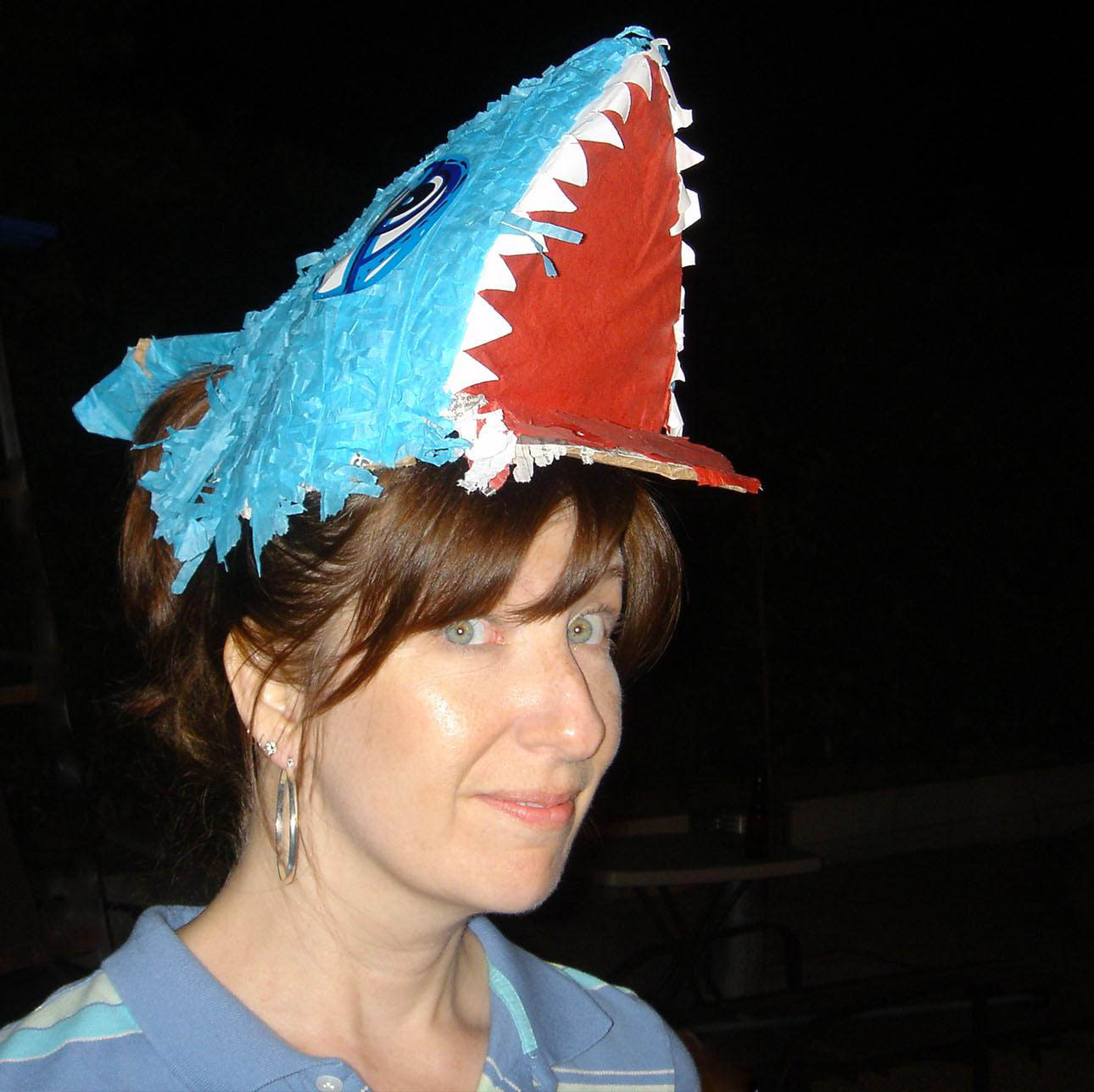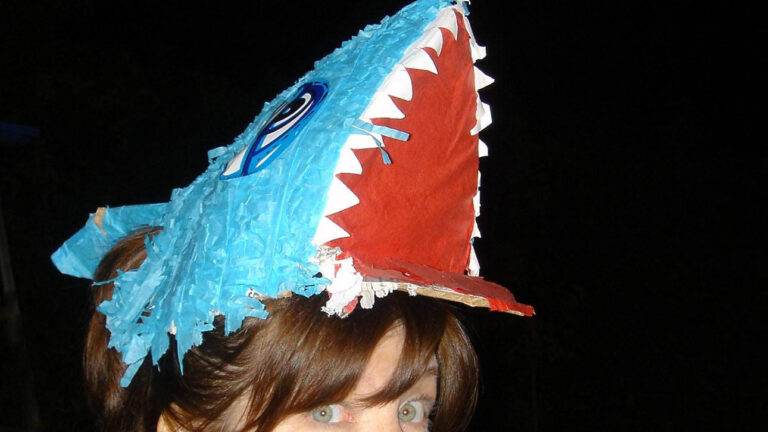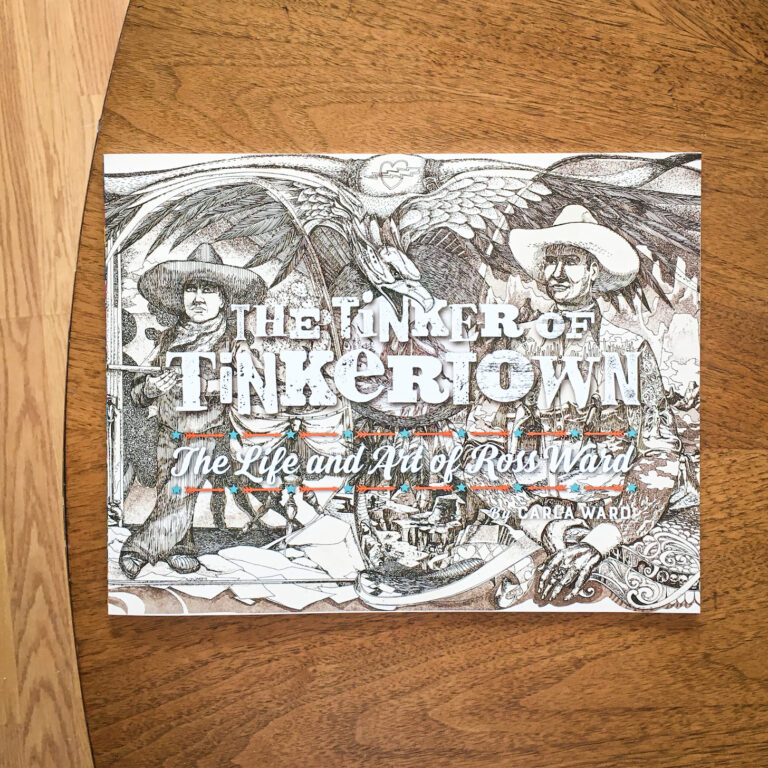Though giraffes struggle, apes are the only mammal that does not instinctually swim. Fear rides high when not put in check by our big brains and we have good reason to be afraid of the water. We could drown; we know that. Plus, there are things in the water that could get us. We reason, weigh risk, and when successful, overcome the scary things that prevent us from reaching our potential.Dealing with fear and its parameters drives the one-woman show by Stacy Patterson that is coming to the Patsy Giffin Theatre at Sandia High School this Friday. The goal is not simply to entertain, but to raise funds for the drama program at Sandia that can help students deal with the reasonable fear of growing up. Weekly Alibi spoke with Patterson about fear, her show and what high school drama did for her. The following is an edited version of that interview.Weekly Alibi: If this show is about tubas, then why do you wear the top part of a shark piñata as a hat? Stacy Patterson: That is the greatest question and the one that I have struggled with just a tiny bit. I’ve always been hesitant to be explicit, but my big clue is this: The discovery that I was afraid of something turned into the discovery that my fear was probably more phobic, diagnosably so, and it has to do with sharks. It particularly has to do with a broken-down mechanical shark that we see in Jaws.I know they had a lot of problems with the shark. The shooting was constantly delayed because the shark was often broken. Exactly. What we know, and what is most scary about the film, isn’t the actual mechanical shark, it’s the camerawork and it’s the theme song. It’s that iconic ba dump. Do you happen to know what instrument makes that sound?Euphonium?It’s actually a tuba.I was close.You were. The music was, of course, written to provide us with that sense of the ominous, ever-present shark that often we don’t actually see in the movie. The journey through the fear and the phobia was–how do I make things more reasonable? It is both funny and somewhat true that the fear is really less about the mechanical shark and more about the feeling. For so many of us, the feeling is often attached to music, sound and in this case, a very iconic theme.Is it scary talking about fear? Generally, no if I am telling stories about other people’s fears. It has taken a lot of work in the course of developing this project to get to a place where the discussion of sharks, in particular for me, is doable.Where does bravery come from?I guess on some level, even though maybe some people may find it cheesy, that notion that we aren’t brave in spite of the things we are afraid of, we are brave often because of them. For me, there is the narrative of this story. I was fortunate. I grew up at a time when you could still roam the yards of the neighborhood. There were lots of things you could tackle and discover your fearlessness. But I’ve also added a handful of characters (to this show) that are compilations of experiences facing the things that can really take our voice and make us most frightened in the real world. It was in exploring those pieces of the narrative that I began to discover that we are all afraid of something and that some of us may never really come face to face with the thing we are frightened of. When we do, we hope the response is reasonable, but sometimes, in my case at least, it made me scared of a bunch of other things that were unrelated. So, I think bravery comes with finding a way to acknowledge the fear and then stepping into these stories and experiences, even though we are afraid of them.You grew up in Albuquerque and went to Sandia High School. How important was high school drama to you?I don’t know that I would be where I am now, having spent the majority of my career in California, but all of my career in the film industry and in the theater, out here in one form or another. When I got to Sandia, one of the first things I did was enroll in Drama 1. It’s where I learned to build sets. It’s where I learned to hang lights. It’s where I learned to breathe deeply and hold space and co-create collaborative things. I don’t know that there is a moment that goes by that I don’t use something that I learned within the four walls of that theater.Do you prefer the one-woman show format over larger productions?In a way I do. This is a really challenging and very fruitful experience to write one’s own story and collaborate even though you are part of a solo piece. It might be a solo piece, but I don’t do it alone. I think it is a terrific avenue for anyone with a story and a voice that might be a little outside of popular media right now.What do you want people to get from the show?I hope that I have created spaces in the story where the story becomes just as much theirs. If there are things that they are afraid of, they don’t have to get on a stage and tell it. I’m doing that piece of it for them, but maybe it may make them feel just a little more courageous. For the students in the audience, I’m hoping that there is something to be gleaned about the particular vulnerability of standing in front of people and telling my own story.
A Reasonable Fear of TubasFriday, March 29 7pmPatsy Giffin Theater, Sandia High School 3104 Pennsylvania St NETickets: $9.06 -$28.16










